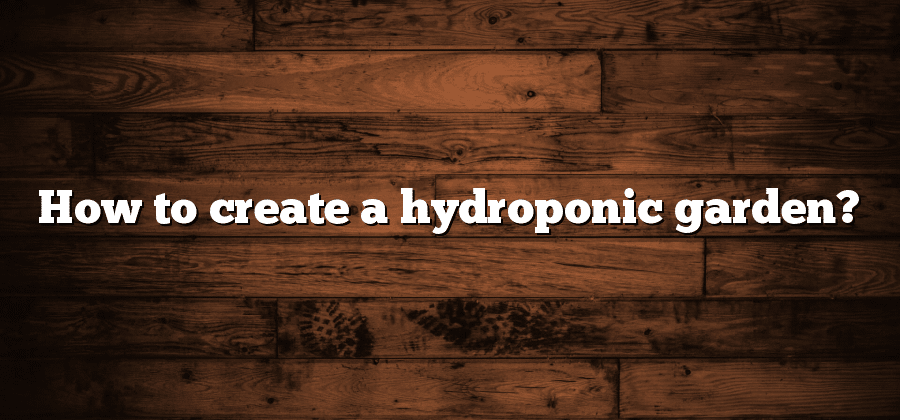Benefits of Hydroponic Gardening
Hydroponic gardening offers a myriad of benefits that make it an attractive option for both commercial and home gardeners. One of the most notable advantages is the significant increase in crop yield compared to traditional soil-based gardening. By providing plants with precisely controlled nutrient solutions, hydroponic systems allow for faster and more efficient growth. This results in higher yields and healthier plants, which can be particularly advantageous for those in areas with limited arable land or harsh climates.
In addition to increased productivity, hydroponic gardening also eliminates many of the common issues associated with traditional gardening methods. Since plants are grown in a soilless environment, there is reduced risk of pests, diseases, and weeds. This not only improves overall plant health but also eliminates the need for chemical pesticides and herbicides. Furthermore, by providing plants with all the necessary nutrients directly through the water, hydroponic systems efficiently use water and reduce the amount of waste associated with traditional irrigation methods. This makes hydroponic gardening a more sustainable and environmentally friendly choice.
Understanding the Basics of Hydroponics
Hydroponics is a modern and innovative method of growing plants without the use of soil. Instead, this system relies on water solvent and mineral nutrients to provide everything plants need to thrive. The roots of the plants are suspended in a nutrient-rich solution or housed in an inert medium, allowing the plants to absorb the nutrients directly. By eliminating the need for soil, hydroponics offers numerous advantages, such as faster growth rates, higher yields, and the ability to grow plants in limited spaces.
One of the essential factors in hydroponic gardening is the nutrient solution. This solution is carefully formulated to provide a balanced mix of all the essential elements required for plant growth. It typically consists of nitrogen, phosphorus, potassium, calcium, magnesium, and other micronutrients like iron, manganese, and zinc. The nutrient solution needs to be regularly monitored to ensure that it remains at the optimal level for the plants. Additionally, maintaining the pH level of the solution is crucial, as different plants have varying pH preferences. Overall, understanding the basics of hydroponics involves grasping the importance of nutrient solutions and their proper management for successful plant growth.
Choosing the Right Hydroponic System for Your Garden
When it comes to choosing the right hydroponic system for your garden, it is important to consider several factors. One of the main things to consider is the type of plants you plan to grow. Different plants have different root systems and growth requirements, so it is essential to choose a system that can accommodate the specific needs of your plants. Some hydroponic systems, like nutrient film technique (NFT) or aeroponics, work well for leafy greens and smaller plants with shallow roots. Other systems, such as deep water culture (DWC) or drip irrigation, are better suited for larger plants with deeper root systems.
Another factor to consider is the amount of space you have available for your hydroponic garden. If you have limited space, vertical hydroponic systems like tower gardens or vertical gardens may be a good option. These systems allow you to maximize your growing area by utilizing vertical space instead of horizontal space. On the other hand, if you have a large area to work with, you may opt for larger systems like nutrient film technique (NFT) or ebb and flow systems. These systems can accommodate more plants and provide a higher yield.
Selecting the Ideal Location for Your Hydroponic Garden
When it comes to selecting the ideal location for your hydroponic garden, there are a few key factors to consider. First and foremost, you want to choose an area that receives ample sunlight. Since hydroponic gardens rely on artificial lighting as well, it is essential to have a space that allows for a balance between natural and artificial light. Look for a location that gets at least 6-8 hours of direct sunlight per day, as this will provide the necessary energy for your plants to thrive.
In addition to sunlight, you also want to choose a location with good ventilation. Proper air circulation is crucial for preventing the growth of harmful pathogens and ensuring the health of your plants. Look for an area with access to fresh air and consider installing fans or other ventilation systems if necessary. Lastly, it is important to choose a location that is easily accessible for maintenance and monitoring. You want to be able to regularly check on your plants, adjust pH levels, and perform routine tasks without any hassle. By considering these factors, you can select the perfect location for your hydroponic garden and set yourself up for success in your gardening endeavors.
Essential Equipment and Supplies for Hydroponic Gardening
When starting a hydroponic garden, it is crucial to have the right equipment and supplies in order to ensure optimal growth and success. One of the essential pieces of equipment is a hydroponic system, which can vary depending on the size and type of plants you plan to grow. Common types of systems include nutrient film technique (NFT), deep water culture (DWC), and drip irrigation. Each system has its own advantages and disadvantages, so it is important to research and select the one that best suits your needs.
In addition to a hydroponic system, you will need a variety of supplies to support your plants’ growth. One essential supply is a high-quality nutrient solution, which provides all the necessary nutrients for your plants to thrive. You can either purchase pre-mixed solutions or prepare your own by carefully measuring and mixing individual nutrients. Other important supplies include a pH testing kit to monitor the acidity levels of your nutrient solution, grow lights to provide sufficient light for plant growth, and a timer to control the duration and frequency of the lighting. Lastly, don’t forget about the growing medium, such as rockwool or perlite, to support the roots of your plants and allow for proper water and nutrient absorption.






